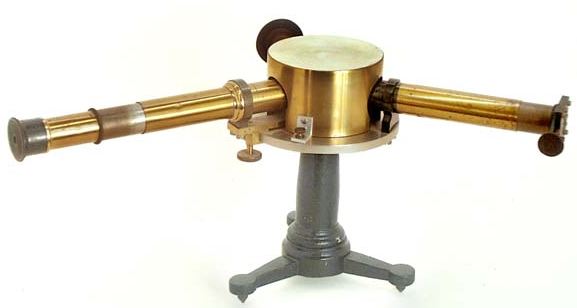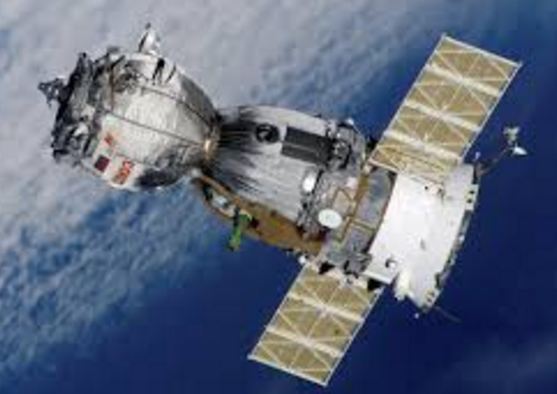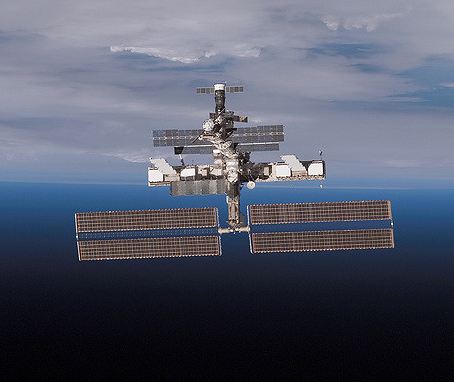List of Benefits of space exploration
 The scientific study of space using especially developed technology is called space exploration. In this post, you’ll learn about the Benefits of Space Exploration.
The scientific study of space using especially developed technology is called space exploration. In this post, you’ll learn about the Benefits of Space Exploration.
Let’s Check it out..
Do you know that all-stars, the sun, the Moon, the earth, all planets, and satellites are called heavenly bodies? The heavenly bodies are moving in an unimaginable vast space universe. The sun, the planets, and their moons are the largest objects in the solar system. But asteroids and comets are the smaller parts of the solar system. We have already studied the solar system and planets.
What beyond our solar system?
We know that our solar system is a part of the universe. The universe is immensely vast. Scientists tell that the universe is expanding. They also tell that there are more than 200,000,000,000 billion stars in the universe. Many questions may arise in our mind as: What is the universe? How did it begin?
Let us try to find the answers to these questions about the universe. The universe is all of space and everything in it. Most of the universe is empty space. Our solar system is an extremely small part of the universe. Many theories are given to explain the origin of the universe. These theories are the results of human efforts in understanding the nature and origin of the universe.
The big Bang theory
According to Islam and other Ibrahimic religions, the universe was created by Allah. Scientists have been presenting different theories of the creation of the universe from time to time. One of these theories is “The big bang theory “.According to this theory: About 10 to 20 billion years ago, the universe was packed into one giant fireball. Then a tremendous explosion is known as the Big Bang.
This explosion hurled matter and energy in all directions. After the big bang, the universe assumed the form of huge clouds of extremely hot, expanding, and contracting gases. With the passage of time, the matter cooled: the force of gravity pulled together the particles of matter to form stars and galaxies. The Big Bang theory was first proposed in 1927 by a priest, George Lamaitre of Belgium. This theory was supported by the discoveries of Edwin Hubble and Nobel prize-winning scientists Arno Penzias and Robert Wilson.
- Edwin Hubble found experimental evidence to support The Big Bang theory. He found that distant galaxies in every direction are going away from us at a very huge speed. This observation is acceptable if the universe began in a huge explosion.
- The Big Bang theory also predicts the existence of cosmic background radiation (the glow left over from the explosion itself). This radiation was discovered in 1964 by Arno Penzias and Robert Wilson. They later won the Nobel prize for this discovery.
Although the Big Bang theory is widely accepted, it probably will never be proved. It cannot answer many questions about the occurrence of the Big Bang. Knowing about space is one of the top priorities of development. Scientists have been using telescopes to look into space to study space objects for a long.
Nowadays many more techniques and facilities are available for further research about space. Telescope, spectroscope, spacecraft, etc are some of the latest technologies in this regard. In this section, we will study the technological tools used in space exploration and their benefits in everyday life. Some of these tools are given:
- Spectroscope
- Spacecraft
- Space station
- Space shuttle
- Telescope
Spectroscope
A spectroscope is an instrument that is used to examine different wavelengths (colors) of light. It consists of a series of prisms that split white light into different colors. The set of different colors obtained in this way is called a spectrum. The wavelengths of light coming from the stars help the scientists to know about the elements and compounds present in the stars. Spectroscopes are mostly attached to the telescopes.
Spacecraft:
Spacecraft is a vehicle designed to travel in space. It is used for different purposes like communication, Earth observation, meteorology, navigation, planetary exploration, and transportation of humans and cargo in space. There are two major classes of spacecraft; robotic spacecraft and manned spacecraft. Robotic spacecraft are sent into space for a collection of data about space, planets, and other heavenly bodies such as asteroids. A robotic spacecraft is controlled from the center of the earth.
Voyager 1 and Voyager 2 were two robotic spacecraft that was used for collecting data about planets Mars and Jupiter. Manned spacecraft carry humans and equipment to space. These spacecraft are larger and have specially built compartments that have the facilities necessary for human survival such as oxygen, pressurized cabins, food, water, and specially built bathrooms. They also have a special structure to protect from dangerous radiations which are very intense in space.
What is a Space station?
For a very long stay in space or for performing experiments in space, large spacecraft called space stations are used. A space station is built in space by carrying its many small parts to space and then assembling them there.
It has more facilities for prolonged living in space. It may have a television for entertainment, bags for sleeping, an exercise machine, and a kitchen for fresh food. One important part of a space station is the scientific laboratory where astronauts perform such experiments that cannot be done on earth because of its gravity.
Nowadays a large space station orbits the earth. Russians, Americans, and other scientists jointly work in this space station. This is called an international space station.
Space shuttle
It is an especially developed manned spacecraft that can be used many times. It is sent into space with the help of a rocket. It carries scientists and equipment. It docks with the space station to transfer its load. After performing its task, it returns and lands back on earth like an airplane.
Benefits of space exploration (video)
Special technologies developed for space are now being used on earth to improve the quality of life. A few examples are as follows:
Benefits of space exploration list
- Health and medicine
- Global navigation
- Locating minerals and fossil fuels
- Weather forecasting
Health and Medicine:
- In the field of health and medicines, space exploration has enabled man to develop medical devices such as WARP 10 and handheld high-intensity LED units etc. These machines are used for getting relief in muscle and joint pains and arthritis.
- The infrared thermometer has been developed to measure the temperature of the body without contact.
- Kidney dialysis machines and mini cameras for taking photographs of internal organs of the human body have been developed using the research output of space exploration.
- The materials used to keep our homes warm are based on the technology used for insulating the space stations.
Global navigation:
- Geostationary orbits and Global positioning system (GPS) uses the network of satellites orbiting the earth to facilitate communication and essential navigation. This system helps our television receivers and mobile phones to catch signals from the satellites moving around the globe.
- The travelers can use this system not only for knowing where they are traveling but also for selecting the best route to their destination. Airplane pilots, sailors of the boats or desert hikers also use the GPS in mobile phones to find their positions and get information about the surroundings.
Weather forecast and prediction of natural calamities:
The accurate and reliable weather reports on an hourly basis are possible because of weather satellites in the space. These satellites have also made it easy to predict natural calamities such as floods, storms, tornadoes, and hurricanes.
Advanced electronics and computers:
Electronic and computer systems were developed mainly to facilitate space exploration. Satellites are fitted with electronic and computer systems that can perform functions automatically. Nowadays many items are made in factories automatically or by controlled robots.
Locating minerals, fossil fuels, and water reserves:
Deeply buried precious ores of minerals, fossil fuels ( coal, petroleum, and natural gas ), and underground water reserves can be located with the help of satellites. This study is known as remote sensing.
How do astronauts survive and research in space?
For living in space, astronauts need basic necessities (air, food, water, shelter, and warmth) for survival and a suitable compartment for personal comfort on the spacecraft. For this purpose, large space stations have been built in the space. Each space station consists of two main sections.
- The pressurized section in which scientists work without spacesuits.
- Open to space section on which equipment is mounted for observing the earth and sky.
The unprotected human body cannot survive more than a few minutes in space. As the liquid boils at a lower temperature at lower pressure, the water in the human body can begin to boil at low pressure result in immediate death.
The astronauts wear a specially designed suit called a spacesuit to protect them from such hazards when they go out into space. For breathing in space, they carry air tanks with them that contain pressurized oxygen and nitrogen. their suits circulate the air to their helmets and throughout the suit so that they can breathe. special foods are prepared and packaged for easier transportation and a variety of tastes for the astronauts.
Problems Created by space exploration and their solutions:
Space sickness, effects of weightlessness, conditions resulting from exposure to radiation, and many unwanted side effects are the problems created during the stay in space. Pollution caused by the burning of rocket fuel and disposal of rocket parts etc is one of the major problems created by space exploration.
- hazards for the space crew on missions are the main problems. many deaths have resulted during manned spaceflights. space scientists and engineers need continuous work to improve safety in space missions.
- Skylabs fell from its orbit to earth in 1979. This type of incidence could be dangerous for the population.
- Space programs are very costly. These are causing an economic burden on the common man. The involvement of the private sector in missions could be a possible solution.
Technological Tools Used in Space
A few of the tools which are used in space exploration programs are mentioned as follows:
Space rocket: 
Space rocket is the means of transporting spacecraft, space shuttles, and space stations into space.
Rocket Launching Pads:
The sites from which rockets are launched into space are called Rocket Launching Pads. These are specially built platforms for firing rockets into space. They can withstand extremely high temperatures and large forces produced by rocket exhausts.
Telecommunication system:
Rockets and spacecraft are provided with a telecommunication system so that the space crew in the rocket capsule can communicate with each other and with the Earth stations.
Ground Mission Control Stations:
Ground stations receive and process the information from satellites to monitor and guide their motion in space. The main tasks in ground mission control are as follows:
- Tracking
Continuously reporting the position of the satellite or space probe.
- Monitoring
Receiving signals from a spacecraft and decoding them into useful information from the scientists is known as monitoring. Progress of a space mission is closely observed and necessary introductions are issued from time to time.
New Technologies Developed on the Earth as a Result of Exploration of space
We have learned in the section above about the technologies and benefits of space exploration. In order to reiterate some of the technologies developed on the Earth as a result of space exploration are listed below.
- Special types of metal alloys and ceramic material developed for rocket engines and space shuttle can withstand very high temperatures and pressure. These are now being used in Jet engines. Similarly, special foam seats developed for spacecraft are now being used in airplanes and car seats.
- Solar cells were originally developed to provide electricity to spacecraft. Millions of them are being installed on Earth nowadays to produce almost free electricity from sunlight.
- In case of illness, astronauts have difficulty is swallowing medicine pills in space. Special medicines have been developed for use in space. These medicines, directly pass through the skin and enter the body of the patient. These medicines are now being manufactured for the patient on Earth who finds it difficult to swallow the pills.
- Special sensors and computers were developed for monitoring the physical conditions of astronauts such as pulse rate, blood pressure, blood sugar, etc. Now-a-day the same technology is used to monitor patients present in in-accessible areas, with the help of satellite communications. A doctor in an advanced city hospital can check a patient who is far away in a remote village and suggest medicine for him. By this method, the doctor can even perform surgical operations on remote patients.
See also:
- Stars life cycle
- Galaxies
- Satellites
- Artificial gravity
- Orbital velocity
Read Also:
Very neat blog. Really Cool.
Im obliged for the blog article.Thanks Again. Keep writing.